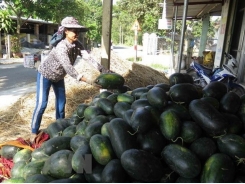How to formulate a low-protein animal diet

An easy process to understand how feed-grade amino acids and crude protein specifications interact to form a balanced low-protein diet
There has been much talk about the need to formulate animal diets without antibiotics at low crude protein levels. The benefits are many, and the cost is nil or even positive when animal performance is factored in. Only in certain regions of the world are low-protein diets still considered a low-quality product. In contrast, a well-balanced low-protein diet is a much desirable product that should merit a price premium because it offers a healthy return on investment. On the other hand, an unbalanced diet, low in protein or not, is always a clear waste of money.
An unbalanced diet, low in protein or not, is always a clear waste of money.
Once the decision has been taken to formulate a low-protein diet, the question next becomes how to affect this through the feed formulation software. And, to make things a bit more interesting, how much is enough? Or, in other words, how low can crude protein be lowered? The answer is easy, but it takes some work to accomplish. Having a robust feed formulation program is a must, and the following assumes as such. Then, the following list should serve as a rough guideline for educational purposes. When it comes to real, commercial feed formulas, a highly qualified nutritionist should be assigned the responsibility to ensure nothing goes amiss.
- We begin by formulating a typical diet that meets the nutrient requirements of the animals in question (say a broiler starter feed) using only wholesome ingredients, such as corn and soybean meal and all the necessary micro-ingredients. We must avoid using any and all of the available feed-grade amino acids, such as L-Lysine HCL, etc.
- In our formulation program, we set a minimum for all amino acids (total or digestible makes little difference for this exercise, but use what you normally have) according to the nutrient specifications we are following. Such information is available either by genetic houses or scientific bodies such as the National Institute for Agricultural Research (INRA) or the National Research Council (NRC). We next run the formulation program, and when the diet is rightly balanced (it takes a few runs), then we note down the crude protein level. Say this is 21 percent crude protein — this is the normal protein level.
- Now we set a maximum to the crude protein specification. We begin with lowering protein by two percentage points, for example from 21 percent down to 19 percent. We also add in our available ingredient list some feed-grade amino acids. Most likely we will need to add lysine and/or methionine. We again run the feed formulation program, and the newly balanced diet will now include some feed grade amino acids. This is our first low-protein diet! Usually, this is where most should stop. That is, 2 percentage points is a risk-free level. But, feel free to experiment more!
- As an advanced step, we can reduce the above crude protein maximum by another 2 percentage points, say from 19 percent down to 17 percent. We will now need to add more feed-grade amino acids, most likely threonine and tryptophan. Again, we balance the new formula, and now we have a very low-protein diet with 4 percentage points lower than a normal diet. If we used only common raw materials, then this is again a rather safe formula, but if the feed contains “exotic” ingredients there are a number of checks and balances that need the hand and eye of an experienced nutritionist to ensure everything remains as it should be.
- Going below 4 percentage points is not recommended. In fact, it is strongly advised not to do it. It is an exercise to be attempted only by the most qualified nutritionist as valine, histidine and other amino acids (depending on species and age) need to be checked. Other imbalances will also occur as protein-rich ingredients are not just protein; they also contribute several minerals, such as potassium. In general, let the best experts handle this. It is not impossible, but it is an invitation to disaster without consulting a most qualified nutritionist.
So, next time you read in one of my articles or elsewhere that a low-protein diet is required in order for any antibiotic nutrition program to work, you will have an idea how this relates to your own feeds. It is always the diet without feed-grade amino acids that should be taken as the starting point and not the current diet being used. As most diets today contain at least some feed-grade lysine or methionine, when advice is made to reduce crude protein by X percentage units, we must always refer to the non-supplemented basic diet and not the one we use now. Doing otherwise runs the risk of facing the problems mentioned in steps four and five above.
As a side note, one should do this exercise described here by dropping crude protein by only 1 percentage unit at a time: say, from 21 to 20 to 19 to 18 to 17. Such process will result in feed-grade amino acids being pulled in one at a time (the most limiting each time) revealing the order of limitation. Then, we could work with another feed ingredient (say, rapeseed meal or barley) and see how the order of limiting amino acids changes (or not!). Repeat with another species and observe a totally different, yet similar pattern in getting amino acids in a limiting order. Isn’t nutrition interesting?
Có thể bạn quan tâm
Phần mềm

Phối trộn thức ăn chăn nuôi

Pha dung dịch thủy canh

Định mức cho tôm ăn

Phối trộn phân bón NPK

Xác định tỷ lệ tôm sống

Chuyển đổi đơn vị phân bón

Xác định công suất sục khí

Chuyển đổi đơn vị tôm

Tính diện tích nhà kính

Tính thể tích ao hồ




 Mekong farmers switch to growing lemongrass
Mekong farmers switch to growing lemongrass  VN farm products export to Thailand
VN farm products export to Thailand